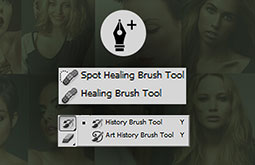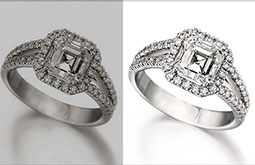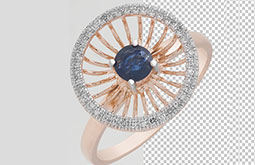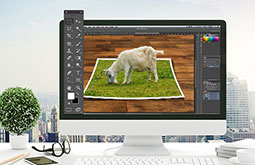Comprehensive Guide on Popular Photo Editing Styles
Developing a great photo doesn’t stop after taking the pictures. Instead, the real work starts thereafter. Photo editing is undoubtedly the most significant part of photo production. This is the stage that involves several image editing processes, stylizations, enhancements, retouches, applying artistic filters, and more. All these technical adjustments are done to maintain a consistent style throughout the photos.
That said, all editors must be aware of the various photo editing styles or approaches that make them stand out from the rest. If you are an aspiring editing professional, this article is for you. Keep reading till the end to learn more about the different image editing styles you can pull off the next year. These popular stylistic approaches will not only help you to refine your unique style, but also experiment with diversity.
But, first things first, let us clarify the concept of photography editing styles and how integral they are to image production.
What are photo editing styles?
Photo editing styles are defined ways of editing or processing photographs after they are shot. Applying styles to photo retouching is nothing new. Since the old days of crude, basic cameras, photo editors edited and enhanced photos in a way that made them look appealing to the viewers. With the advent of modern photography, DSLRs, and new-age editing software, more and more editing styles are seen.
However, the sole intent remains the same; making a photo appealing and connected with the mood of the photographed subject.
There are three main adjustment types of photo editing styles that editing professionals follow. This includes tone adjustments, color and vibrancy fixes, and, lastly, incorporating special effects. Often, certain editors suggest to abide by one particular style of editing for the sake of consistency. This signature style establishes you as a brand and becomes a part of the photographer's or editor’s identity.
However, modern-age editing specialists are of the opinion to keep on experimenting with various styles. This exploration not only helps you be creative in your workflow, but also expands your skill set. Eventually, as an editor, you will be able to cater to different clients with different tastes and preferences.
Now, let’s delve deep into the different styles of post-processing and retouching essential for all professionals to know and try on. Keep scrolling!
Best photo editing styles editors can try in 2025
Listed below is a list of the top 11 most popular photo editing styles utilized by millions of photo editors. Professional photo post-processing companies leverage these styles, mixing and matching them for wedding photos, real estate photos, portrait photos, and more. That’s the reason they can deliver outstanding image editing services. Check out the list below and test them out for yourself.
-
Light and airy editing style
This modern-day picture editing style is mainly utilized for retouching wedding photos to generate a more romantic, dreamy appearance. The style involves soft, pastel colors that have an uplifting, cheerful mood. Several lifestyle photographers leverage this style to create happy, upbeat images perfect for occasions.
Lightroom and Photoshop both have several presets that a retoucher can use for creating this breezy, ethereal, light, and airy photo.
-
Natural style
This particular style shows the photo exactly as it appeared when the shot was taken. To create such a true-to-life and authentic look, professional editors take this editing approach.
However, natural style doesn’t mean no adjustments whatsoever are made; edits are duly made in the images, but they are so subtle that one would think of the image as an unedited one. The modifications are mainly directed towards bringing out the image or the subject’s natural beauty.
Photoshop has a lot of options for making these manual adjustments. Alternatively, Lightroom has several in-built Pure Presets. Experienced image retouchers also use these presets to retain the natural effect.
-
Cinematic editing style
The sole purpose of this particular style is to create a movie-like effect in the pictures. The editing effects can replicate popular TV shows or cult movies. This style involves most of the technical nuances used for color grading.
Unlike color correction, color grading is what sets the tone and mood of a video. Likewise, when the color grading process is done for still images, the mood tone changes. Replicating the color scheme, tonal quality, and contrast, cinematic editing is done in professionally edited photos.
-
Bold/vibrant style
If warm, vibrant colors are your go-to choice, try the bold style of photograph editing. In this style, the colors appear bold, yet natural. There’s nothing over the top with this style. Regardless of whichever editing program you use, the software will utilize the camera device’s complete dynamic range.
After that, the editor enhances the saturation, hue, and tone, making the colors pop. This ensures the image has colorful wedding confetti and florals, bold and fiery sunsets, and tropical, clean blue water, thus creating a breathtaking image.
-
Warm black/white editing style
Black and white photos are the perfect embodiment of class and elegance. The neutral colors bring out the best in a portrait or a scene showing two contrasting ideas. Moreover, with warm black or white and slightly lower contrast, images get an even more subtle, soft, and warm look.
This style is best suited for landscape photography, portraits, or other photos. The warm black-and-white editing style mutes the color elements in an image but does not completely eliminate them. Also, the shadows are slightly brightened, and the highlights are somewhat toned for better viewing.
-
Retro/vintage image editing style
Retro or vintage photos are all the rage now, given the prevalence of Instagram filters and the demand for retro aesthetics. Professional image enhancement specialists apply the retro photo editing style to mimic the antique look of the 19th-century art form. This has become one of the most trending photo editing styles.
Also, pop culture of the 1970s and 80s can be created with a vintage editing style. This style mainly evokes nostalgia in the minds of the viewers, giving them a throwback feel to yesteryear.
-
Matte finish style
The matte finish style is just the opposite of the vibrant and bold editing approach. This is primarily implemented in new-age photography, especially for product or real estate images. The style is implemented to tone down the light and shadow contrast.
The matte effect’s current popularity can be traced back to the usage of matte-effect paintings in TV shows and movies. The effect creates a stylized background and makes pictures look even more dreamy.
In Lightroom, the curves can be adjusted to create the matte effect. The specific editing style is highly versatile and can give the edited photos a dark, washed-out, vintage aura.
-
HDR editing style
As we know, HDR stands for “High Dynamic Range”; implying a lot of minute details in a photo, especially in the darkest and brightest areas. This long color range between the highlights and shadows creates the necessary amount of ‘drama’ required for the photo’s concept.
The HDR editing style utilizes this technique and generates a natural-looking image, but with a lot of visible color tones, increased sharpness, and bright colors. This style of image retouching is best for real estate photos, which often need to showcase the brightest blue skies and darkest shadows.
This dynamic contrast can be generated in a photo editing software by using the HDR photo editing style.
-
Damaged/scratched editing style
Adding scratches, blotches, and other damaged looks gives photos a vintage vibe. However, the damaged editing style must not be mixed up with the retro/vintage editing style (discussed above). Noth has its own distinct aesthetic fervor and gives an edge to plain-looking photos.
The subject’s appearance remains intact; only the texture of the image looks grainy. This particular image editing style involves adjusting the exposure and some texture blending. It is perfect for grunge photos that showcase an extreme range of emotions.
-
Dark/gloomy editing style
Some photographs require a dark, gloomy, and mysterious vibe, owing to the context. In case the original images fail to depict such a vibe, the dark and gloomy editing style is ideal for creating such mature effects. The primary characteristics of this retouching style are dramatic, rich, and deep color tones.
It is also sometimes called a ‘boho’ or ‘earthy’ style. The effect can be created either by manual adjustments in Photoshop, or by utilizing the Mood Presets in Lightroom.
-
Minimalistic editing style
A lot of brands and creatives are favoring minimalist aesthetics, and photo editors are no different. In the minimalist style muted colors, clean lines, and negative spaces are used to create a contemporary and sophisticated look. It's very common in product, architectural, and portrait photography.
5 handy tips to find the right image editing style
Finding the right editing style is easier said than done. However, with some basic tactics and tips, one can eventually find the ideal editing style that aligns with their workflow. Finding the right style might not happen overnight.
But the following handy tips can give you a headstart. The idea is to solidify your career as a successful photo editing professional.
So, without further ado, let’s discuss the five tips to follow to find the best photo editing style and approach.
-
Define your artistic vision
Your artistic and creative vision will tell you the story or narrative you want to convey through the photo. Even though each project will have a different concept, once you define your creative vision, it becomes easy to find the right approach.
Whether it depends on the composition, the mood, or the subject matter, these aspects are perfect for carving out the stylistic direction or vision.
-
Identify the target audience
Before getting started with the post-processing, it is imperative for the editing artist to understand the end users, or the target audience. Based on their choices and preferences, you can tailor your editing style and approach.
Whether your style will be dramatic, romantic, moody, or vibrant, it all depends on the kind of audience you have or your client caters to. -
Observe fellow photo editors
It’s never wrong to draw inspiration from people you admire. Likewise, it doesn’t harm to analyze other professionals in your niche and observe their style of editing. The best way to tackle a competition is to understand it.
As an aspiring image editor, study the techniques of your competitors, identify the elements you have in common, and then start combining them with your style.
-
Try to build a brand identity
Your brand identity will help you distinguish yourself from other photo editors and photographers. Not only that, but branding also instills trust and creates an instant brand recall factor. The idea is to let everyone recognize the photos edited by you or your agency in one go.
Maintain a distinct signature style of editing that will be instrumental in shaping your brand persona and helping you stand out.
-
Be open to learning and experimenting
It goes without saying that anything pertaining to creativity and artistry is relative. Therefore, there’s no such defined formula to bring into play each time you sit for your editing.
As a photo enhancement specialist, you must keep experimenting with different styles and techniques, all the while staying true to your branding and the photo’s subject matter.
At the same time, always be open to learning and exploring newer approaches to try on. During continuous experiments, you will ultimately find the right style you were searching for.
Conclusion
Hope you have gained a lot of insights on each of these styles and understood their differences with each other.
Now it’s over to you. Start following the tips to find the right style for your workflow and impress your clients. Exploring multiple editing styles and experimenting with them in the photo editing process will surely generate stunning results.
Also, if you ever need any expert guidance in editing your images, you can always reach out to the professionals. Several experienced digital photo editing services agencies are there that are backed by proficient experts. Collaborate with one of these high-end image editing companies and get the best-edited photos.




